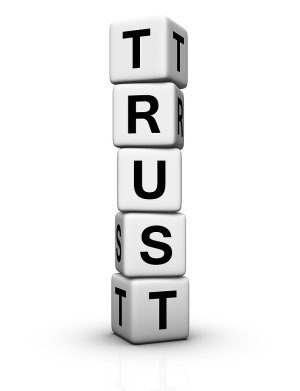My company, Spark Media Solutions, is a service business. In the past 5 1/2 years that we’ve produced media as brand journalists we’ve learned a lot about working with clients. What follows is my learned advice. But it’s far, very far, from everything. Please do me and your fellow Spark Minute readers a favor. After reading this list, please add your own advice as well. I know I’ve got plenty to learn.
1. Work your butt off for your clients
 Unless you’ve got some fabulous investments or a rich relative that sends you fat monthly checks, clients are the only ones paying you. Respect that first and foremost. This is the primary rule of working for clients.
Unless you’ve got some fabulous investments or a rich relative that sends you fat monthly checks, clients are the only ones paying you. Respect that first and foremost. This is the primary rule of working for clients.
2. Set boundaries for your work
 While you should work hard for your clients, you have to set limits that both you and your client understand. That way things don’t spin out of control. It’s not that clients want to take advantage of you, it’s just sometimes they think of new things they want. When they introduce new ideas for a project, remind them of the current boundaries and the budget. But don’t be a hard ass about it. Small additions should be warmly accepted. You have to use your best judgment here. You don’t want to be seen as difficult to work with, but at the same time you don’t want the scope of work to change for the same budget.
While you should work hard for your clients, you have to set limits that both you and your client understand. That way things don’t spin out of control. It’s not that clients want to take advantage of you, it’s just sometimes they think of new things they want. When they introduce new ideas for a project, remind them of the current boundaries and the budget. But don’t be a hard ass about it. Small additions should be warmly accepted. You have to use your best judgment here. You don’t want to be seen as difficult to work with, but at the same time you don’t want the scope of work to change for the same budget.
3. Experiment and share the results with your clients
Try stuff out on yourself and share that experience with your clients (that’s assuming you have a business that allows for that). The great benefit of experimenting on yourself is there’s really no pressure. The sole purpose is self education. There’s no chance you’re going to lose a client. When you hit upon an experiment that succeeds, tell your client. You’ll be introducing a new opportunity for them and that will be beneficial for you. Clients only pay when you’re solving the problem or you’re creating a new opportunity. If they mostly come to you with problems to solve, it’s up to you to offer up opportunities as well. And the only way you’ll discover those opportunities is through experimentation.
4. Vent to anyone, but your clients
 I hear people complaining about clients all the time. That’s great. Complain to me all you want. Don’t ever complain to your client. That’s a fast road to nowhere. If any of my clients are reading this, understand I never say anything bad about you. This is just something someone told me once and I thought it was good advice.
I hear people complaining about clients all the time. That’s great. Complain to me all you want. Don’t ever complain to your client. That’s a fast road to nowhere. If any of my clients are reading this, understand I never say anything bad about you. This is just something someone told me once and I thought it was good advice.
5. Debrief after every project
 With our work we have very defined project starts and finishes. At the end of most of our projects we have a debrief to see what went right, what went wrong, and how we can improve for next time. I’m amazed at how many companies don’t do debriefs. It’s a great reflection point and a great time to learn. It’s possible many avoid the debrief for fear of being chewed out for their work. That it might weaken their relationship with the client. Quite the opposite. By making yourself vulnerable and open to criticism you’re making it clear that you want to grow with the organization and improve. The less transparent you are the greater the chance the relationship will sever. As a nice protection measure for all parties involved in a debrief, I usually like to say at the beginning that the purpose of the conversation is not to point fingers, but just to determine what worked and what didn’t, so we can all improve for future projects.
With our work we have very defined project starts and finishes. At the end of most of our projects we have a debrief to see what went right, what went wrong, and how we can improve for next time. I’m amazed at how many companies don’t do debriefs. It’s a great reflection point and a great time to learn. It’s possible many avoid the debrief for fear of being chewed out for their work. That it might weaken their relationship with the client. Quite the opposite. By making yourself vulnerable and open to criticism you’re making it clear that you want to grow with the organization and improve. The less transparent you are the greater the chance the relationship will sever. As a nice protection measure for all parties involved in a debrief, I usually like to say at the beginning that the purpose of the conversation is not to point fingers, but just to determine what worked and what didn’t, so we can all improve for future projects.
6. Revisit your debriefs
As much as I like debriefs, they really don’t hold water if you don’t revisit them. It’s really easy to forget them as I do all the time. One good way to avoid this is to simply put revisiting the debrief as the first agenda item for the next project.
7. Keep them in the loop on progress
 Don’t ever keep your clients in the dark. At bare minimum, on a weekly basis clients should know how far along you are with a project. I’ve spoken to developers that have weekly reviews of code scheduled with clients. One developer, Steve Zehnguht of Zeek Interactive leaves his code wide open from day one allowing his clients to see his work at any point. If they want to they can pick it up at any point and go to another developer. But as you imagine, when you are that trusting of your client, they are that trusting of you and that never happens.
Don’t ever keep your clients in the dark. At bare minimum, on a weekly basis clients should know how far along you are with a project. I’ve spoken to developers that have weekly reviews of code scheduled with clients. One developer, Steve Zehnguht of Zeek Interactive leaves his code wide open from day one allowing his clients to see his work at any point. If they want to they can pick it up at any point and go to another developer. But as you imagine, when you are that trusting of your client, they are that trusting of you and that never happens.
8. Create your own deadlines
 This may not be easy for everyone, but unless your client has done your work before, you need to educate them as to how long a project will take to complete. But be realistic for yourself so you can set the right expectations for your client. For example, you could possibly get a two-week project done in a week if you kicked it into high gear. Problem is that’s not sustainable. All clients want work done right away, but they also have no idea if something takes an hour or a week to do. It’s your responsibility to explain what’s involved and create your own deadlines and delivery dates.
This may not be easy for everyone, but unless your client has done your work before, you need to educate them as to how long a project will take to complete. But be realistic for yourself so you can set the right expectations for your client. For example, you could possibly get a two-week project done in a week if you kicked it into high gear. Problem is that’s not sustainable. All clients want work done right away, but they also have no idea if something takes an hour or a week to do. It’s your responsibility to explain what’s involved and create your own deadlines and delivery dates.
9. Always be differentiating yourself
This is one of the most vital ways of securing a client relationship and getting more business. One of the fears with many service providers is how easily you can be replaced. There are tons of photographers, web designers, and video editors out there. Why should your client continue to work with you? Is it because you’re a lot of fun to work with? Do you have some of the best equipment? Do you make the review process easy and painless? Figure out what it is and make sure you’re known for it. And then when you figure that out, find some other way to differentiate yourself. Keep doing it. It’s the only way you can stay in business.
10. Over deliver
 If you see an extra opportunity in your work that the client didn’t see and it’s not that much extra work, go ahead and do that little bit extra. That can be simply a connection, some free publicity through your network, or just a little something more they didn’t expect. It’s always a welcome and appreciative special surprise. This is one great way to differentiate yourself.
If you see an extra opportunity in your work that the client didn’t see and it’s not that much extra work, go ahead and do that little bit extra. That can be simply a connection, some free publicity through your network, or just a little something more they didn’t expect. It’s always a welcome and appreciative special surprise. This is one great way to differentiate yourself.
11. Always be working for your client
For my retainer-based clients, I have a line in the contract that says, “Even though we’re contracted to work XX hours a month, we’ll always be working for you. We are always thinking of you when we’re looking for or meet up with opportunities.” This means that if you happen upon someone that would be a good connection or opportunity for a client. Make that connection. Clients recognize and appreciate this kind of beyond-the-hours networking.
It all culminates in trust
 What all these tips have in common is that they build trust between you and your client. Ultimately, when a client gives us an assignment we don’t want them to worry about a thing. We understand their needs and we try to deliver on those needs. It’s my basis for hiring contractors. Half of the money I give a contractor is to actually do the job. The other half is because I trust them so much that when I hand them the work, I just know it’s going to come back perfect. I don’t have to worry. Worrying is a cost I don’t want to incur.
What all these tips have in common is that they build trust between you and your client. Ultimately, when a client gives us an assignment we don’t want them to worry about a thing. We understand their needs and we try to deliver on those needs. It’s my basis for hiring contractors. Half of the money I give a contractor is to actually do the job. The other half is because I trust them so much that when I hand them the work, I just know it’s going to come back perfect. I don’t have to worry. Worrying is a cost I don’t want to incur.
OK, I divulged the techniques I’ve used to improve my client relations. I know I’ve got plenty to learn and I implore you to help me and fellow Spark Minute readers to learn more. What’s your client build advice?




